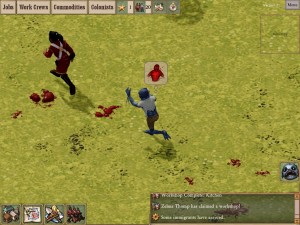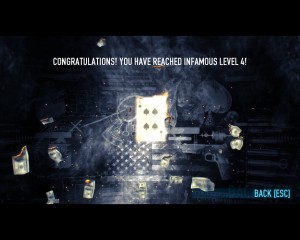I’m returning to a topic I’ve talked about a long time ago. Feedback is a critical part of understanding and development and something all designers make use of. When we break things down, there are two broad categories of reactions that we see in game design and are important to break down.
Pavlov’s Conditioning:
The classic experiment by psychologist Ivan Pavlov showed the world the concept of classical conditioning. There, he was able to condition dogs around the stimulus of a bell to represent food.
Classical conditioning was using a controlled stimulus with an uncontrolled stimulus and connect them together. From the experiment, he was able to condition dogs to drool at the sound of a bell after pairing food with it.
We may not be drooling, but we’re conditioned to do certain actions based on feedback. More importantly, certain design philosophies and genres make use of different feedback that affect how impression of the game. To start, let’s talk about positive mechanics or feedback.
Positive:
Positive mechanics are built around rewarding the player for completing an action. There have been examples of positive mechanics dating back to early video games. Examples would be anything from picking up coins in Mario, getting points for shooting asteroids, leveling up and so much more.
The point of positive mechanics is that by giving you a positive stimulus, they condition the player to keep performing them for continued rewards. If the player does X and gets rewarded, then they know to keep doing it.
We can extend this thinking out with mechanics designed to motivate the player to keep playing or perform a task.
One example is the concept of “Rest exp”, or when designers give a bonus pool of experience for players who log off for X amount of hours.
The game is trying to condition the player to not play the game for a certain period and be rewarded by it.
Another case would be daily rewards in F2P or social games; again, the game is conditioning the player to come back every day no matter what to get a reward.
The point of positive feedback, and by extension positive mechanics, is to make the player want to do something. If you want proof positive of the impact and allure, look no further than the clicker or social game genres. These games are designed around positive feedback to get someone to keep playing with the pull of new rewards, more resources, status symbols and more.
While positive feedback makes you want to do something, negative feedback is just as important when it comes to game design and player feedback.
Negative:
Negative feedback works on the same basic level as positive: Conditioning the player. However, where positive feedback wants the player to do something, negative feedback wants them to not do something. There are plenty of examples of negative feedback: Running out of lives and getting a game over, picking up a poison mushroom in Mario, getting killed in the Souls game and so on.
Negative feedback gives a sense of weight to the game and is a way of defining the rules and punishment of a title’s design. Going back to MMOs, if rest exp was a positive feedback, then losing experience on death would be a negative one. The scale of the punishment will impact the feedback just as much as the reward from a positive example.

Negative feedback warns the player about doing something or stops them from performing an action again
As an interesting case, rogue-likes have made use of negative feedback to for “tough love” when teaching players mechanics and rules.
Many rogue-likes feature conditional items or gear have to be carefully managed due to their specific utility. If an item or mechanic kills the player on their first use, they won’t try it again when it could be better for them if they were conditioned by it earlier.
I’m sure at this point everyone reading this knows positive and negative feedback, and want to know this: “What is better for the player?”
Balancing the Scales:
Positive and negative feedback both have their roles within a game’s structure. There must be a win and lose condition for you to even have a game in the first place. The reason is simple: There must be something to reward the player just as there has to be something at stake. Once the design and structure of your game is established, we have to talk about additional mechanics in your design.
When it comes to motivation or progression, positive feedback is superior. Guiding the player to do something requires you to give them a reason to do so. The important part about positive feedback is that it will provide progress in some way, shape or form to the player.
The problem with negative feedback is that by its definition it’s going to put the player back. As we’ve talked about in previous posts, you never want the player to feel like they’re wasting their time. That doesn’t mean you can’t have weight with negative feedback, but that you have to use it at the right instances.
Going back to rest experience, some designers experimented with reducing the experience the player would get if they played too long. While this had the same response of telling the player not to play for so long, it affects the player differently.
The positive form rewards the player for logging off, but doesn’t punish them for not using it. The negative form actively punishes the player for playing the game and cannot be avoided. The player must be doing something wrong for you to use negative feedback; otherwise, you’re just making things frustrating. As we’ve talked about how negative feedback is stronger, you need a fine touch to use it properly.
Because of how polarizing negative feedback is, you need to be really careful in terms of teaching the player with it. There is a risk when you have events that have the chance of either having a positive or negative feedback.
If the player gets the negative one first, they’re going to assume that it’s always going to be negative and actively avoid it.
Many early games used frustrating design to troll the player with negative feedback. A classic example would be platformers that had pits that were either death traps or secret areas.
That also raises an important point: Negative feedback works best when it’s absolute. If you’re going to punish the player, they need to know exactly why they were punished for negative feedback to work. This is why games built around skill-based progression are easier to grasp compared to abstracted play. The reason is that the player can see without any doubt why something worked or it didn’t.
The problem with learning through negative feedback in abstracted games is that it’s hard to grasp what went wrong. I talked about this before with strategy games. Due to how the systems are integrated, it’s impossible for a new player to know that on turn 5 they made a mistake that led to them losing on turn 50.
Catching Flies with Honey:
Feedback is a critical part of learning when it comes to just about everything, and knowing how to use both positive and negative conditioning is crucial for game development.
Remember, it’s always easier to get someone to do something with positive feedback as opposed to negative. Mobile and social games know this lesson by heart with how they keep people engaged. While it may seem a little sappy, the more positive you make the experience, the greater the chance of someone getting all the way through it.
When progression comes to a standstill, it’s very easy to raise the white flag and give up. As a final thought, I’m curious for the folks reading this: What are some of your favorite examples of positive feedback and how they motivated you to keep going? Or the use of negative feedback to affect your play without making you pull your hair out.
If you enjoyed this post, please consider donating to the Game-Wisdom Patreon campaign. Your donations can help to keep the site going and allow me to produce more great content. Follow me on Twitter @GWBycer, and you can find daily video content on the Game-Wisdom YouTube channel.




